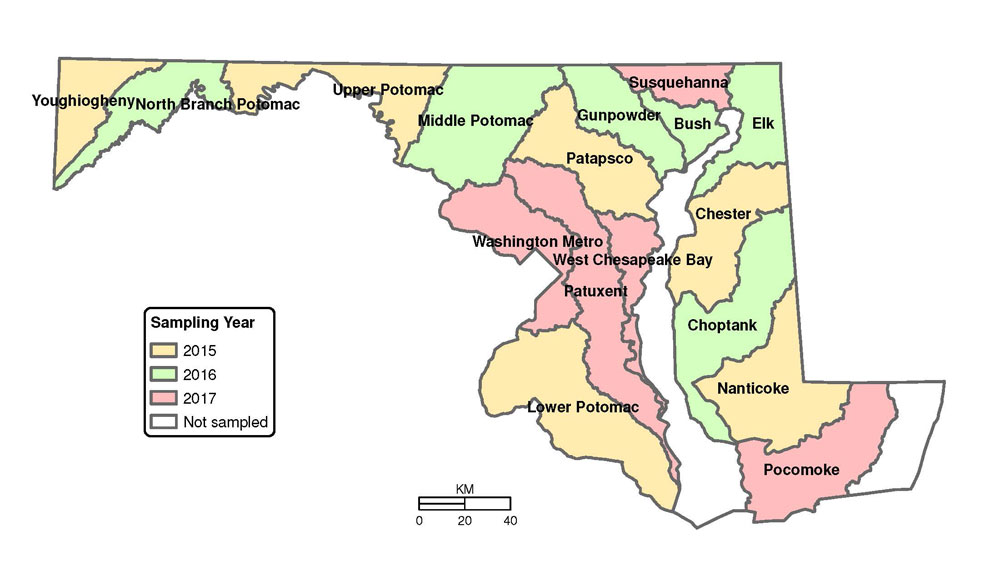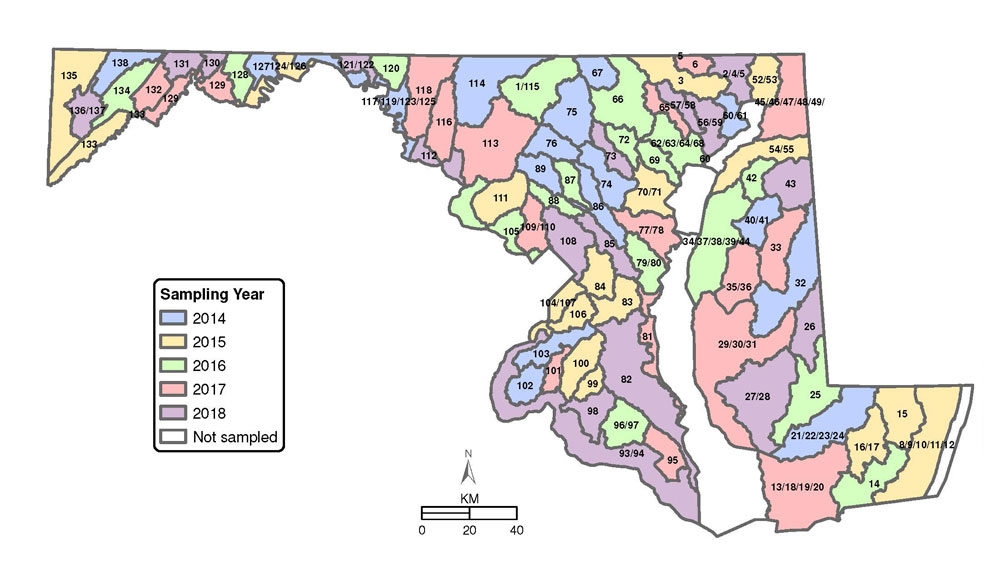Purpose
The Fourth Round of the MBSS optimized our ability to detect changes over time in Maryland’s stream conditions.
Reason
Stream ecosystems are incredibly complex and variable. There is a need to know how they respond to management efforts in the face of continued impacts. Over the last 20 years the population of Maryland has increased, putting stress on our streams. At the same time, stream restoration and conservation (including additional state and local regulations and policies) related activities have been ongoing. Round Four provided an assessment of how stream ecological conditions have changed which could allude to the success of efforts to protect and restore stream ecosystems.
Method
The MBSS used randomly selected sites to provide a statistically rigorous representation of Maryland's stream conditions. Round Four involves re-sampling a subset of randomly-selected stream sites that were sampled previously, a widely accepted design. The sampling process took five years. Sites that were sampled in 1995, 1996, and 1997 were re-sampled 20 years later (in 2015, 2016, and 2017). A separate set of sites that were sampled in 2000, 2001, 2002, 2003, and 2004 were re-sampled beginning in 2014 — 14 years later.
A power analysis was performed to determine the appropriate number of samples to be taken during Round Four.
Round One BasinsSampled in Round Four
Round Two Watersheds Sampled in Round Four
Round Four Results
A report is now available that presents results from Round Four sampling.
This round assessed four key metrics to determine how Maryland streams have changed over time: benthic macroinvertebrates, fish, water chemistry, and temperature. The results were mixed for Maryland’s streams, with some encouraging signs of improvement and other findings that highlight ongoing challenges.
- Overall, the ability for streams to support fish and benthic macroinvertebrates did not change significantly.
- However, in both fish and benthic macroinvertebrates, sampling found decreases in sensitive species and increases in tolerant species, possible indicators of larger ecosystem alterations.
- Fish samples found non-native and invasive species increased in richness and abundance over time, potentially leading to biotic homogenization.
- Reference sites had lower native fish abundance over time, but random sites did not.
- Benthic macroinvertebrates showed mixed results in the 14-year comparison; more caddisflies and fewer collectors showing signs of improvement, while fewer mayflies indicate signs of degradation. The 20-year comparison exhibited more signs of degradation.
- Consistent with global temperature increases, water temperatures in streams across much of the state were found to be getting warmer, with significant increases in average daily temperatures, minimum temperatures, and temperature readings above 68 degrees Fahrenheit.
- However, streams in the Highlands region (western Maryland) and reference streams in the Piedmont region (central Maryland) did not have significant temperature changes. In addition, there was evidence of potential cooling in the Highlands region, which is beneficial to stream life.
- Maryland streams were found to be less acidic, lower in sulfate, and had a higher acid-neutralizing capacity.
- In addition to positive water chemistry trends, there were also unfavorable trends with higher conductivity and chloride in streams, while nutrient results were inconsistent.